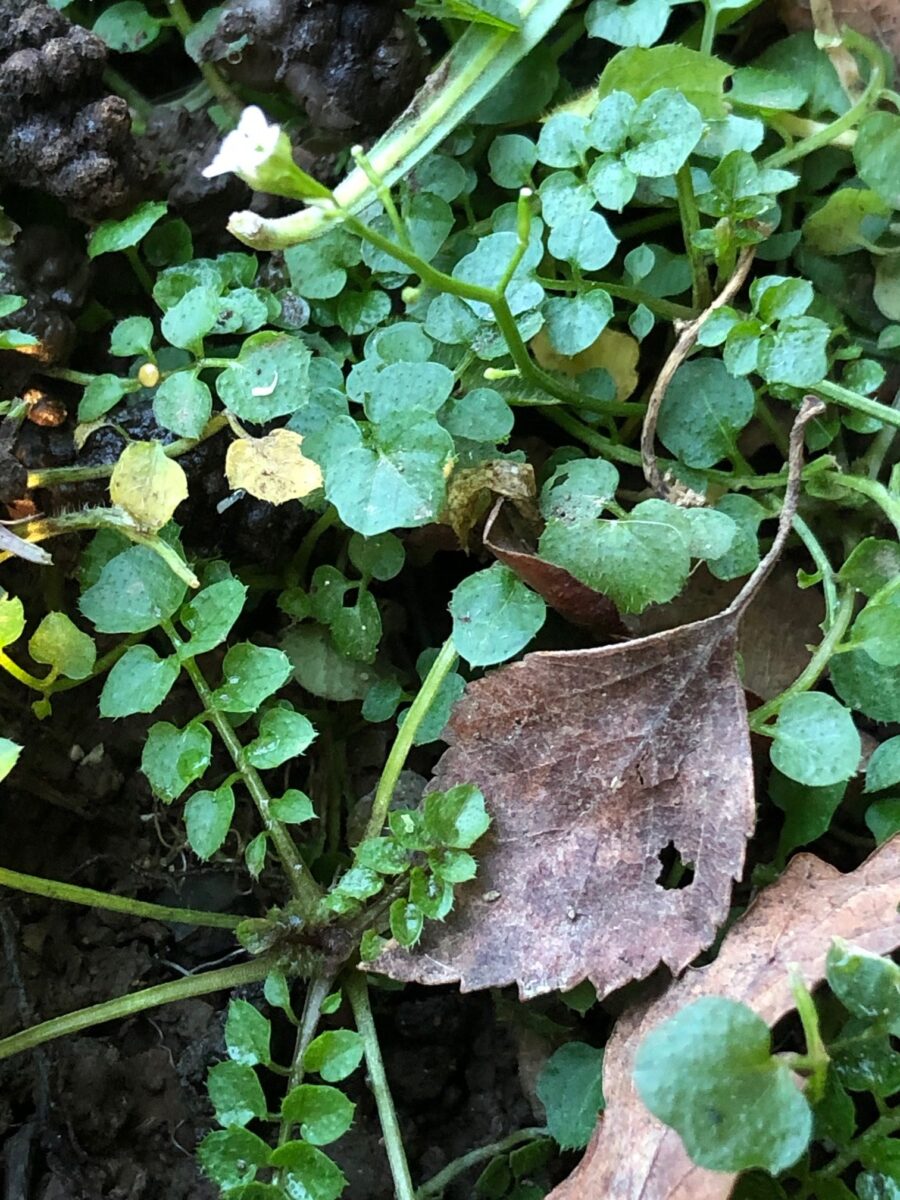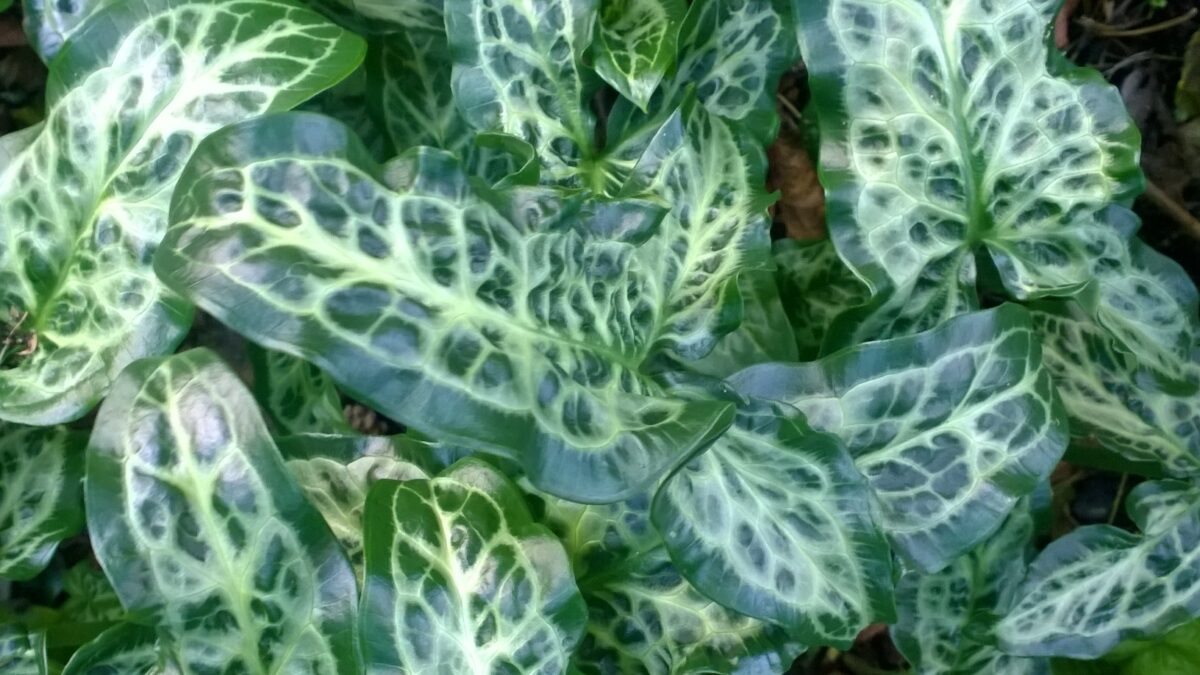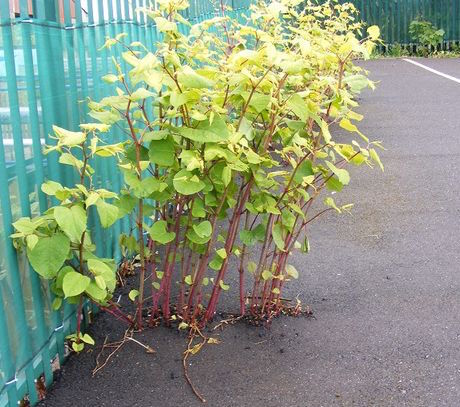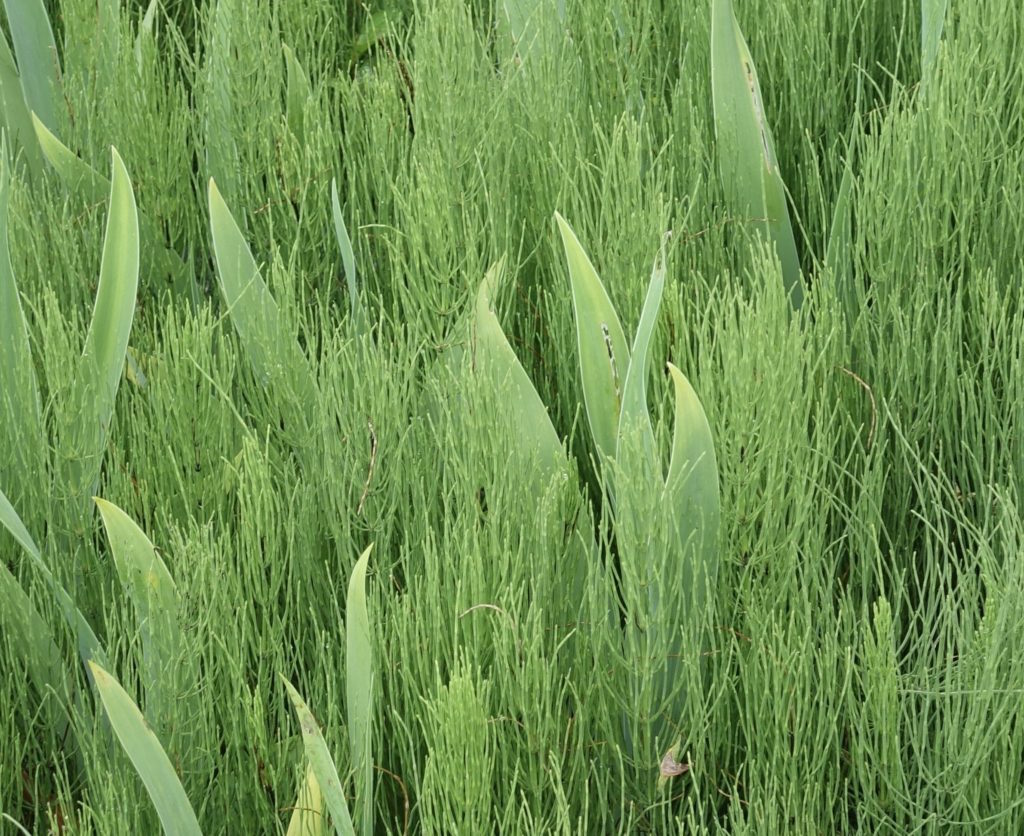
So which weeds are the worst and what can you do to stop them? Each weed has its own fiendish strategy to insinuate itself and every garden has its own set of infiltrators, but luckily we three old campaigners are here to guide you through your defence options.
1. Bindweed. It’s those clever devils that invade underground with sinisterly brittle roots that can regenerate from a tiny chunk that worry me most, and bindweed is the chief offender. The old trick was to stick a bamboo cane beside it and once it had made enough leafy growth, paint it with Tumbleweed. But with glyphosate, the active ingredient in most systemic weed killer now largely removed from the market we have to operate zero tolerance and just wade in and dig it out with a spade as deeply as you can the minute it pops up.
2. Hairy bittercress, Cardamine hirsutus, seemingly an innocuous little plant that you can winkle out with a finger and thumb, but this dastardly little blighter has adopted a different but equally effective strategy by means of a supercharged seed dispersal mechanism which can ping out up to 5,000 seeds three metres away. You must be vigilant about removing them from February onwards (they can grow at very low temperatures). I can’t recommend anything as effective as a razor hoe for this, and I’ve added our shop link at the end. Never ever put the arisings into your compost heap, as another of their tricks is to continue to ripen once uprooted and inject their seeds directly into the material that you’re going to spread all over your garden in the next month or two. Clever eh?

3. Horsetail. A garden’s pedigree is no barrier. A few years ago we watched, with a certain degree of schadenfreude, the insidious invasion of this deep rooted weed into the prairie gardens at RHS Wisley (take a look at what it’s done to a group of iris in our feature photo). Their exasperated manager told us they planned to trial a new weeding wand that actually electrocutes the offenders…..

Blimey – chemical warfare and electrocution! Typical Laura, wielding bottles of poison with wild abandon whenever she’s allowed, I have become more circumspect with my use of ‘substances’, except for exceptional situations. I worry, like many, about the end result of all this destruction; I can’t even remember the last time I sprayed a rose, for instance (I just live with the black spot!)
And, dear sister, you really must keep a sense of perspective – hairy bitter cress won’t come up through your bath plug, or wind its tentacles round the roots of your perennials. It isn’t even ‘hairy or ‘bitter’ – in fact, it is a rocket-y tasting salad that graced the plate of Our Dear Queen in the winning main-course of the Great British Menu a few years ago. So call it land cress, think of it as cheap ground-cover, then eat it. But there are some weeds that exasperate even me.
4. Couch grass. It’s narrow leaves seem to find a way to photobomb my beloved perennials as soon as my back’s turned. Fiddling its wretched fine roots out of the crowns of my precious plants is appallingly time-consuming and tricky, but if you want to go chemical-free you simply re-assign this task to the category of mindful therapy, a bit like knitting.

5. Your own garden plants. (What Laura describes darkly as the ‘enemy within’) If the definition of a weed is a plant in the wrong place, then Houttuynia, Anemone japonica, Lysimachia ‘Firecracker’, Arum italicum ‘Pictum’, and even snowdrops (plus a host of other plants) would all qualify for honorary weed-status. But they’re all so pretty en masse! And the arum leaves are MARVELLOUS in little flower-arrangements, you know.
6. Daisies. Anathema to some but I would go so far as to say I like them, and they were the only thing that stayed green in our lawn during the burning heat of last summer. Tell your neighbours that you’re thinking of the pollinators, and leave the Lawn Weedkiller on the shelf, I say.

Well, well Elaine, this laissez-faire approach – it’s all good fun till someone loses an eye – or gets a ground elder infestation.
7. Ground elder. It’s as persistent as weight-gain. You think you’ve obliterated it but, no, no, it’s perpetually re-trenching under the surface. And it really loves the temperate (wet) summers in Scotland – aren’t we lucky? You can try letting it get some decent leaf growth and spray it or obsessively dig it out, but if you have it really badly you’ll have to move house – and to another village really.

8.Japanese knotweed. Ironically I was once nearly unable to move house because of this horticultural equivalent of ‘Carrie’. Surveyors condemned my Georgian flat in Glasgow flat unsaleable when a stalk of the wretched stuff popped up next to the dustbins. And to think we welcomed this new and exciting plant into our British gardens back in the day – whose idea was that? Bite the bullet – if you can’t get your local authority involved you actually have to hire a squad of specialists in full body armour to eradicate it and give you a guarantee against regrowth in five years. Yes it’s that bad.
Here’s the link to that absolute weed weapon – the Burgon & Ball razor hoe, in our shop. You won’t know how you coped without it!
NB On the other hand, Louise has picked a plant that’s architecturally superb, easy to grow and flowers now, as her Great Plant this Month. You’ve got to have a peak…..
If you’d like a bit more gardening chit-chat from the3growbags, do enter your email address here.

6 replies on “8 weeds to worry about, and what to do about them”
All true and I seem to have most of them! However, you missed out Ranunculus ficaria (Lesser celandine) which plagues my beds and borders every spring, choking out my anemone blanda and miniature daffs. Agreed, it disappears in a puff of brown shrivelled foliage in summer but not until it has seeded itself everywhere and multiplied itself below ground via it’s little soil coloured tubers. A persistent perennial pest! Grrrr!
A good method to try and rid your garden of this particular weed is to mulch fairly deeply with as cheap a material as you can find. After a growing season and before seed dispersal you scrape off the mulch and donate it to your local council greenwaste collection or somewhere away from YOUR garden. The celandine bulbils will have migrated upwards into the mulch and hence you most probably will have got shot of them. I must add I have not tried this, so good luck.
Thanks Mark but surely that would kill off everything else trying to grow and flower at the same time like my thousands of anemones and dwarf daffs? Why do the celandine tubers migrate into the mulch?
Hello David, Laura here, and yes I have to admit that I have double standards with lesser celandine. It lifts my heart to see it growing wild in our stream bank, flowering in the early March sunshine but, like you, I am completely flummoxed when it decides to move into my flower beds, where it suddenly seems to lose all its charm and becomes the focus of quite evil plots to remove it. I suppose it is just another case of right plant, wrong place! Good luck with your battles with it this spring! Happy gardening ?
I wonder if anyone out there has this most persistent ‘weed’? It comes back and back and looks like a Geum leaf. Every year, about this time I do my best to dig it out and bin it – and every year, without fail, it returns just more prolifically. Where it is so deceitful is that you THINK you have got it all out as it doesn’t have scrabbling roots – just the one decent lot. Furthermore, I am quite certain that I have dug up a number of beautiful Geums in error. I wonder if you know what I’m talking about and if so, what’s to be done to help it to distinction?
This is interesting Jane. Caroline here. I did a bit of research and found this:
Wood avens (geum urbanum) can be confused with pretty (and pricey) cultivated ‘geums’ except that it is tougher and grows any and everywhere, and not where you would have planted a geum. Dig it out carefully – it will grow again from pieces of root left in the soil.
Apparently it’s also called Herb Bennett. There’s a comprehensive guide on how to show it who’s boss here: https://www.rhs.org.uk/weeds/herb-bennet
As you say – very annoying that it disguises itself as a much loved gem – very sneaky! Best of British this year – go to it! XX